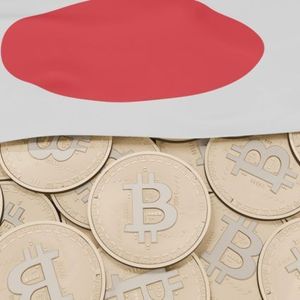In a surprising turn of events, leading investment bank Goldman Sachs has recalibrated its economic outlook, offering a sigh of relief to markets worldwide. Just days after sounding alarms about a potential U.S. recession, the financial giant has withdrawn its forecast. What sparked this dramatic change of heart? It all boils down to a significant pause in tariff implementations by the Trump administration, as reported by Walter Bloomberg on X. Let’s dive into the details of this economic U-turn and explore what it means for the US economy and beyond. Why Did Goldman Sachs Initially Predict a Recession? On April 7th, Goldman Sachs raised eyebrows across the financial landscape by increasing its 12-month recession probability for the U.S. economy from 35% to a concerning 45%. This revision reflected growing anxieties about various economic headwinds, including potential impacts from ongoing trade disputes and anticipated tightening of monetary policy. Investors and market analysts closely monitor such forecasts from institutions like Goldman Sachs, as they often influence market sentiment and investment strategies. The initial prediction underscored the fragility of the economic recovery and the potential for unforeseen shocks to derail growth. Here’s a quick look at the timeline: April 7th: Goldman Sachs increases 12-month recession probability to 45%. {{Date of Bloomberg X post}} (Approximate): Trump administration pauses tariff implementation. {{Date of Goldman Sachs withdrawal}} (Approximate): Goldman Sachs withdraws recession forecast. The Game Changer: Tariff Pause and its Economic Implications The central catalyst for Goldman Sachs’ revised outlook is the pause in tariff implementation. Tariffs, essentially taxes on imported goods, can have a ripple effect across the economy. They can increase costs for businesses, potentially leading to higher consumer prices and reduced corporate profits. In an environment already grappling with inflation concerns, the prospect of new tariffs added another layer of uncertainty and downside risk. By pausing these tariff implementations, the Trump administration has seemingly eased some of the immediate pressures on the US economy, providing a more stable foundation for growth. Consider these potential benefits of a tariff pause: Reduced Inflationary Pressure: Paused tariffs can help prevent further price increases on imported goods, easing inflationary pressures. Business Stability: Companies can operate with more predictability, knowing that input costs are less likely to spike due to new tariffs. Improved Trade Relations: A pause can signal a willingness to negotiate and potentially de-escalate trade tensions, fostering better international economic relationships. What Does This Mean for the US Economy? Goldman Sachs’ withdrawal of its recession call is a significant vote of confidence in the resilience of the US economy . It suggests that while challenges remain, the immediate threat of a sharp economic downturn has diminished. This doesn’t mean the economy is out of the woods entirely, but it does signal a potentially more optimistic trajectory. The pause in tariffs is seen as a crucial factor in mitigating downside risks and supporting continued economic expansion. However, it’s important to remember that economic forecasts are not guarantees, and various factors can still influence the future economic landscape. Key factors influencing the US economy: Factor Potential Impact Inflation High inflation can erode purchasing power and dampen economic growth. Interest Rates Rising interest rates can cool down economic activity and increase borrowing costs. Global Events Geopolitical instability and global economic slowdowns can impact the US economy. Consumer Spending Consumer spending is a major driver of the US economy; changes in consumer behavior can significantly impact growth. Impact on Market Sentiment and Crypto The news from Goldman Sachs is likely to have a positive impact on market sentiment . The removal of a prominent recession forecast can boost investor confidence, potentially leading to increased investment in various asset classes, including cryptocurrencies. In the volatile world of crypto, market sentiment plays a crucial role in price movements. Positive news can trigger rallies, while negative news can lead to sell-offs. A more optimistic outlook on the broader economy can create a more favorable environment for crypto adoption and investment. Potential impacts on crypto market sentiment: Increased Investor Confidence: Reduced recession fears can encourage investors to take on more risk, potentially including crypto assets. Positive Price Action: Improved sentiment can lead to increased buying pressure and positive price movements in the crypto market. Broader Market Rally: A general market rally, driven by positive economic news, can often lift the crypto market as well. Actionable Insights: What Should Investors Do? While Goldman Sachs’ revised forecast is encouraging, it’s crucial for investors to maintain a balanced and informed approach. Here are some actionable insights: Stay Informed: Keep abreast of economic developments and market analysis from reputable sources. Diversify Your Portfolio: Diversification remains a key strategy to mitigate risk, especially in volatile markets. Long-Term Perspective: Focus on long-term investment goals rather than reacting impulsively to short-term market fluctuations. Assess Risk Tolerance: Understand your own risk tolerance and invest accordingly. The withdrawal of the recession forecast by Goldman Sachs is a noteworthy development, offering a glimmer of optimism in uncertain times. While economic challenges persist, the pause in tariffs appears to have provided a crucial buffer, altering the near-term outlook. This shift underscores the interconnectedness of global economics and the significant impact of policy decisions on market sentiment. As always, staying informed and maintaining a strategic approach is paramount for navigating the ever-evolving financial landscape. To learn more about the latest crypto market trends, explore our article on key developments shaping Bitcoin price action.













